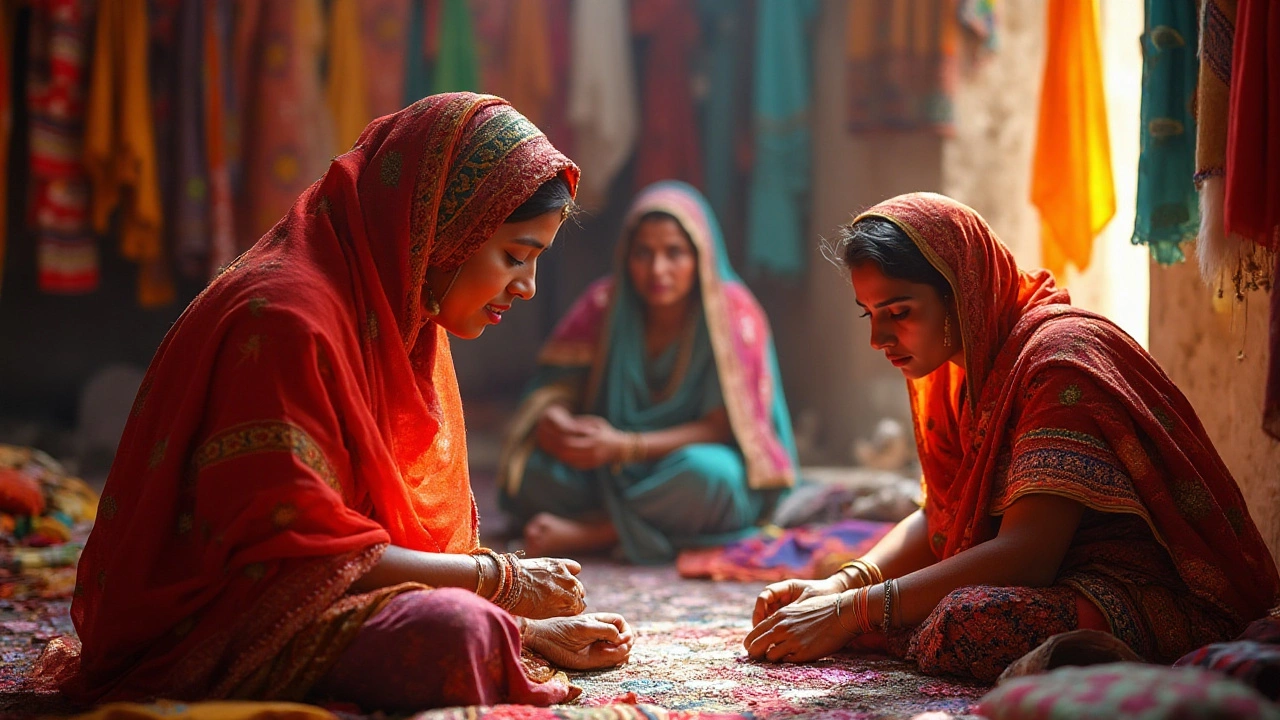Indian Crafts – A Simple Guide to India’s Hand‑Made Treasures
India’s craft scene is huge, and you don’t need to be an expert to enjoy it. From colorful hand‑loom fabrics in the north to intricate bronze statues in the south, each piece tells a story of people, place, and tradition. This guide gives you the basics you need to start exploring, buying, and sharing Indian crafts.
Popular Types of Indian Crafts
Textiles: Hand‑loom sarees, dhotis, and dupattas are woven on traditional looms like the pit‑loom in Gujarat or the ikat in Odisha. Look for natural dyes and signature patterns – a pair of tiny dots might mean a particular tribe.
Woodwork: States such as Rajasthan and Karnataka are famous for carved wooden furniture, toys, and decorative panels. The wood is usually sourced locally, and artisans use hand tools that have been passed down for generations.
Metalwork: Bronze and brass items, especially from places like Moradabad and Bidar, include everything from temple bells to decorative wall hangings. The signature “hand‑hammered” look comes from a very hands‑on process.
Pottery & Terracotta: Clay pots, earthenware, and terracotta figurines are still made in villages across Madhya Pradesh and West Bengal. The earthy texture and natural colors make them perfect for modern home décor.
Jewellery: Silver work from Rajasthan, Kundan from Gujarat, and tribal beadwork from the Northeast showcase a mix of old techniques and contemporary design.
Where to Find Authentic Indian Crafts
Online marketplaces are convenient, but they often mix genuine pieces with mass‑produced copies. The safest bet is to shop directly from certified artisan collectives, government‑run craft fairs, or regional exhibitions. A quick Google search for “handloom exhibition Delhi 2025” will reveal dates and venues.
If you travel, head to state‑run emporiums like Crafts Bazaar in major cities. These stores display a wide range of items and guarantee that a portion of the price goes back to the makers. While you’re there, ask the staff about the craft’s origin – most love to share the story behind each product.
Another option is to support NGOs that work with tribal communities. They often have online stores that ship worldwide, and the profit margin stays with the artisans. Look for certifications like Gear Up or Handloom Mark to confirm authenticity.
When you bring a piece home, treat it with care. Natural dyes fade with harsh sunlight, and metal items need occasional polishing. Simple maintenance prolongs the life of the craft and shows respect for the creator’s work.
Finally, spread the word. Share photos of your new finds on social media and tag the artisan’s name or the collective’s handle. The more people talk about these crafts, the stronger the market becomes for the makers.
Indian crafts are more than décor – they’re a living link to centuries of culture. By understanding the basics, knowing where to shop, and taking a little time to care for them, you help keep these traditions alive for the next generation.
